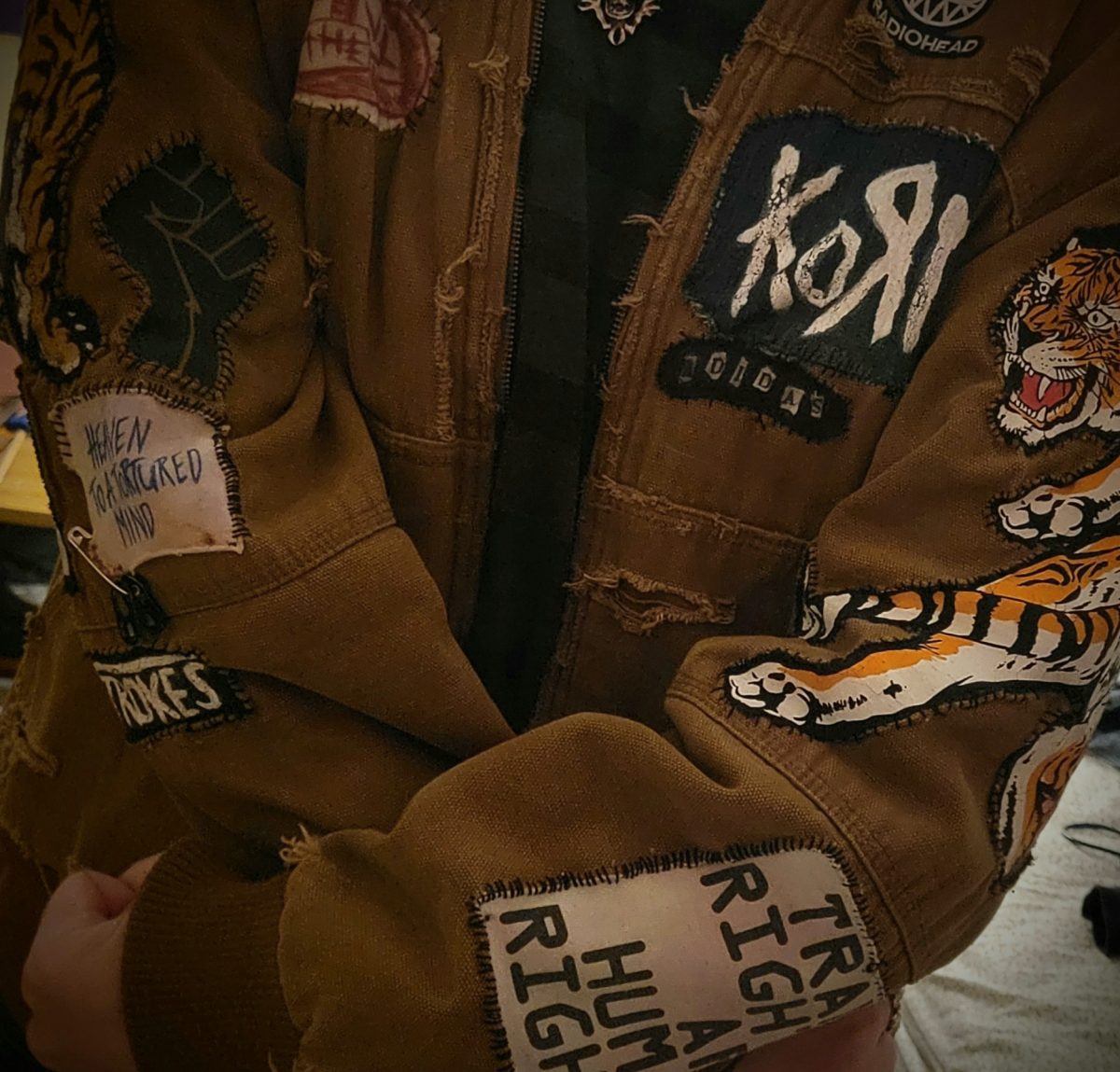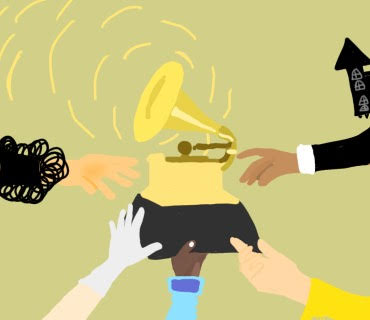Art is an important and abstract expression of freedom used to shift and create cultures. Going by this definition, fashion can easily be classified as an art form. With how quickly fashion trends evolve, then, each new day has the opportunity to be a paradigm shift. A paradigm shift is a significant change in societal norms and executive function, caused by an accumulation of dissatisfaction with the current structure of society. Therefore, theoretically, every time a person expresses themselves through dress, they have the capability to change the world, and vice versa, every time the world changes, so does fashion.
A major example of fashion and history interchangeably affecting each other is the development of women’s self-expression through fashion, which blossomed in the Roaring Twenties in the U.S. This era is most known for its flashy flapper dresses and short dresses, which at the time were considered promiscuous and shocking. Fashion had just exited the Edwardian era, which in contrast was significantly more modest than the dress seen in women throughout the 1920s.
In the 1920s, a rapid economic boom was taking place along with a high rate of consumer-produced goods such as refrigerators and automobiles. Following the end of WWI, the era brought a sense of newfound pride and desire to reject tradition and embrace modernity. At the same time, Prohibition was enforced throughout the United States banning any manufacturing, transportation and consumption of alcohol to try and increase sobriety. However, this led to the opposite effect—people in America became even further infatuated with alcohol and other scandalous and illegal activities, including when it came to dress.
Women, in particular, became involved in the jazz scene and drinking socially. With this lifestyle change, moving away from being in the domestic sphere, they reinvented the traditions of women’s dress. These are some of the many factors that contributed to the flashy and rebellious fashion styles of women, which influenced the continuous change and resistance seen by women through fashion in the twentieth century.
“Often fashion is a part of social change when people are trying to challenge norms of society,” Columbia Heights High School AP U.S. History teacher Ms. Erin Edwardson-Stern said. “We see that, for example, in the 1960s, when there was a counterculture and the hippie movement was questioning if the American Dream [was] the way of life. Fashion is a way to reject tradition and show a group that we’re [all] different and bring what’s thought of as normal in a different direction.”
Drag culture is another key example of this. Created in part as a support network for LGBTQ+ people who have faced losing everything, drag and ballroom (a 1980s queer New York subculture known for hosting competitive, creative performances in drag clothing and forming family-like bonds) communities found drag mothers taking in people who often were homeless and were ostracized from their social life. Fashion became a visual representation of the ultimate self-expression and continues to be extremely important to queer culture in general; joy is utilized as a form of resistance as seen through ballroom and drag culture, and thus, fashion too.
Ballroom and drag fashion was founded amid political and social oppression and created to provide a space of free expression for queer people. The styles within these cultures range from camp to fish, displaying a wide variety of styles shaped by individual personal identities, working and living conditions and social climate. Emerging alongside the Civil Rights Movement of the 1960s, queer people faced heavy discrimination, including bar raids and social ostracization, culminating in the Stonewall Riot, a pivotal moment in the battle for gay and queer rights that also sparked fashion trends that remain today, such as colorful patchwork jean jackets and t-shirts emblazoned with political slogans. With this context, it’s crucial to understand the constant danger drag queens face—and despite this, they continue to prevail no matter the harassment they endure.
“We have lived a long time in a binary world we see a lot of gender identity [expression in fashion] that is pushing past norms and opening people up to nonbinary thinking,” Edwardson-Stern said. “Because it’s such a visual thing, it can influence people in a lot of ways, and having a smaller group [with] different fashion choices, then you can see people who are not as progressive will take on the fashion and gain progressive thinking.”
Likewise, African American fashion has become hugely influential in all outlets of fashion across the world, which can be attributed to the richness of African American culture. Black fashion is built upon decades of resistance, community and brilliance. One way of resisting racial oppression has been through the arts. One of the most influential and vibrant displays of African American culture was the Harlem Renaissance of the 1920s and 1930s, which found Black Americans sporting pinstripe suits with wide ties and intricately patterned dresses. Similar to the concurrent newfound freedom of women, the Harlem Renaissance exhibited new artistic identities that challenged several racial norms. It reflected the cultural shifts taking place, which continue to African American culture and identity today.
In the 1970s, disco became an important artistic space for self-expression for Black and queer people (and Black queer people) alike. Disco showcased startlingly unique fashions like bell bottoms and platform shoes, along with dance and music centered around loose, beat-driven grooves. Built by the African American community with direct influence from the Harlem Renaissance. However, a culture as vibrant and joyful as disco faced backlash with the “Disco Sucks” counterculture toward the end of the decade, which ironically, was the mainstream sentiment at the time. Disco Sucks resulted in the burning of records and increased hate towards disco culture, which was rooted in white supremacy and homophobia.
Continuing into the 1990s into the 2000s, rap, R&B and hip-hop blossomed and incorporated into mainstream music—a trend that continues today. Each of these unique movements showcased different and innovative fashions exclusive to African American music and culture. From Adidas tracksuits to baggy FUBU jeans and shirts, these trends were rooted in resistance to white oppression, despite constant harassment over gold chains and “sagging” pants. Along with the music, fashion became an integral part of African American identity as seen throughout the century. African American fashion and art are testaments to the survival of culture and thriving despite the constant force of oppression.
“African American fashion has always been way more than just looking good,” Ja’Sirah Barber (11) said.” It’s culture, it’s history, it’s resistance. During the Harlem Renaissance, African American people were turning fashion into a statement, like, ‘we’re here, we’re powerful, and we’re beautiful.’ That energy never left. You can see it now in everything; from streetwear and luxury fashion to how people style their hair, layer clothes, or wear bold colors. African American fashion keeps setting the trends, and the world keeps following. It’s style mixed with story, and that’s what makes it so powerful.”
Punk and alternative fashion was another important cultural paradigm shift that worked to speak truth to power. Surfacing in 1960s Britain and the U.S., skinheads originally were working-class youth rejecting middle- and upper-class values with shaved heads and combat boots, but some were subsequently drawn into neo-Nazi groups. As a result, a counter-movement of liberal skinheads emerged who actively fought back by infiltrating and physically confronting Neo-Nazi spaces and, in some cases, thoroughly beating the life and soul out of these white supremacists. Through this display of violence, the new wave of skinheads effectively disrupted multiple Nazi communities, successfully disconnecting the fashion from right-winged politics.
The skinhead moment then resurfaced in the 1970s and 80s as the punk movement took place. Punk clothing quickly caught on both in America and Europe, featuring flashy, spikey, edgy, dark and bright styles—much of which was often worn to make a statement. Punk deviates away from mainstream fashion to contradict and reject conformity. Like skinheads, punks—and later, even those who identified as goth or emo—expressed themselves through fashion in part as a means of rebellion against conformity as well as political injustices against the underclass.
Fashion and societal changes like these and more are directly related as they continually impact each other. Dress and clothing shape politics, technology, cultures and minds just as human rights leaders and activists with powerful voices do. Fashion, in particular, is integral as a personal expression of one’s politics, gender, religion, ideals and more. Self-expression allows people to judge and understand one another on a superficial level, gaining insight into significant personal aspects that influence daily interactions. Fashion is so powerful that it simultaneously embodies psychology, culture, identity and politics—consider that the next time you step foot in a thrift store or see someone with a unique look on the streets.









